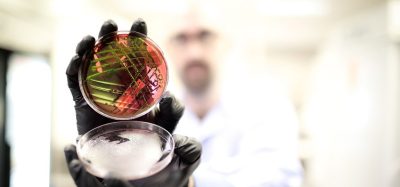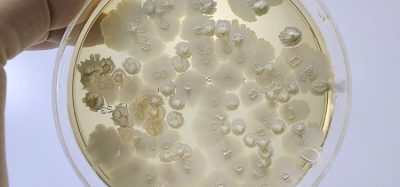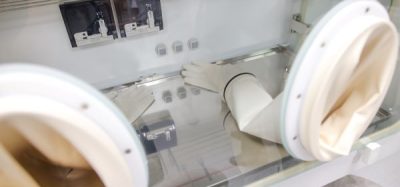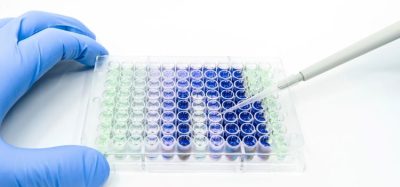Hot topics in rapid methods: revisions to validation guidance and real-time environmental monitoring
Posted: 18 December 2012 |
This is the sixth and final paper in our continuing series on Rapid Microbiological Methods (RMM) that have appeared in European Pharmaceutical Review during 2012. As many of you already know, I am keen on staying on top of recent developments in the world of rapid methods, and have used my own blog (http://blog.rapidmicromethods.com) to communicate technology advances and changes to regulatory and validation practices and expectations. In my final article of the year, I am providing an overview of two very interesting topics that have sparked additional discussions within the professional community: the proposed changes to USP’s informational chapter on the validation of alternative microbiological methods and real-time environmental monitoring.
Revision to USP Chapter <1223>: Method validation is the process used to confirm that an analytical procedure employed for a specific test is reliable, reproducible and suitable for its intended purpose. All analytical methods need to be validated prior to their introduction into routine use, and this is especially true for novel technology platforms such as RMMs.
Because many RMM technologies consist of a combination of instrumentation, software, consumables and reagents, in addition to specific detection, quantitative or identification methodologies, it is important to develop a comprehensive and holistic approach to the validation process to ensure that the entire RMM system is suitable for its intended use.
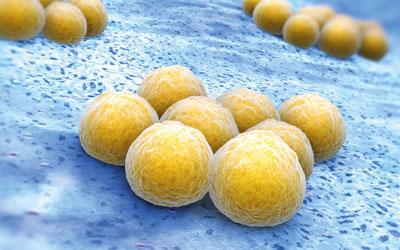

This is the sixth and final paper in our continuing series on Rapid Microbiological Methods (RMM) that have appeared in European Pharmaceutical Review during 2012. As many of you already know, I am keen on staying on top of recent developments in the world of rapid methods, and have used my own blog (http://blog.rapidmicromethods.com) to communicate technology advances and changes to regulatory and validation practices and expectations. In my final article of the year, I am providing an overview of two very interesting topics that have sparked additional discussions within the professional community: the proposed changes to USP’s informational chapter on the validation of alternative microbiological methods and real-time environmental monitoring.
Revision to USP Chapter <1223>
Method validation is the process used to confirm that an analytical procedure employed for a specific test is reliable, reproducible and suitable for its intended purpose. All analytical methods need to be validated prior to their introduction into routine use, and this is especially true for novel technology platforms such as RMMs.
Because many RMM technologies consist of a combination of instrumentation, software, consumables and reagents, in addition to specific detection, quantitative or identification methodologies, it is important to develop a comprehensive and holistic approach to the validation process to ensure that the entire RMM system is suitable for its intended use.
The PDA provided the first true guidance on RMMs, which was Technical Report #33, ‘Evaluation, Validation and Implementation of New Microbiological Testing Methods’. Published in 2000, this document provides information on validation protocol design, testing and acceptance criteria, and installation, operational, and performance qualification strategies. Shortly thereafter, both the United States Pharmacopoeia (USP) and the European Pharmacopoeia (Ph. Eur.) published informational chapters on the same subject.
USP informational chapter <1223>, ‘Validation of Alternative Microbiological Methods’, provides guidance for the validation of new methods for use as alternatives to official compendial microbiological methods. The chapter incorporates the analytical concepts from USP <1225>, ‘Validation of Compendial Methods’, and relates these to alternative quantitative and qualitative microbiological systems. Although there is no guidance on qualifying new microbial identification systems, the USP has since published a separate informational chapter on this topic.
Ph. Eur. chapter 5.1.6, ‘Alternative Methods for Control of Microbiological Quality’, also describes how to validate new methods as alternatives to compendial microbiological methods. A discussion of qualitative, quanti – tative and identification tests and guidance for using validation criteria are provided. Additionally, technology overviews including risk-benefit analysis and an annex describing an example of a detailed protocol for the validation of an alternative method using bioluminescence techniques have been proposed.
All three of these guidance documents are currently under revision. At a recent pharma – ceutical microbiology conference, Tony Cundell, Director, Analytical Sciences Microbiology, Merck Research Laboratories and Vice-Chair, USP General Chapters – Microbiology Expert Committee, provided an update to the USP chapter’s revision process and what we should see when the draft is published in a future issue of the Pharmacopeial Forum.
The revised USP chapter <1223> will most probably reduce or eliminate the prescriptive guidance that is currently found within the existing chapter. This will allow users of alternative or rapid technologies to have more flexibility in the validation and use of these novel systems. Here is an overview of the proposed changes and/or additions:
- Will include wider discussions of instrument and method validation and address the relationship of alternate methods to the USP General Notices and other relevant chapters
- Address regulatory requirements
- Will introduce concepts of performance, results and equivalence to existing methods
- Considerations for QC product release assays versus referee tests
- Provide guidance on alternate methods for compendial microbial tests
- Will consider equipment selection and qualification with actual product
- User specifications
- Installation, operational and performance qualification considerations
- Better define specificity, limit of detection, ruggedness and robustness, and other validation criteria for qualitative and quantitative technologies
- The responsibility of end-users versus instrument suppliers
- Method suitability
- Statistical tools
- References.
And don’t look for recommendations on the best rapid method for a specific application, as there is no plan to include any additional discussions regarding scientific principles or proprietary technologies.
The revised PDA Technical Report #33 will fill in the gaps that the future USP <1223> will leave. For example, TR#33 will provide detailed guidance on every step of the validation and implementation process, regulatory guidance from the FDA, EMA and other agencies, business and return on investment considerations, as well as a review of the technical and scientific aspects of technologies that are currently available. The revised TR#33 is planned for completion in 2013.
Real-time microbial detection and quality control
Rapid microbiological methods are utilised for a variety of applications, including in-process bioburden testing, environmental monitoring and finished product release for both sterile and non-sterile product. Recent advances in optical spectroscopic techniques now allow for the realtime detection, sizing and enumeration of microorganisms during volumetric air sampling. At the same pharmaceutical microbiology conference, and for the very first time, one of the sessions brought together three technology innovators that provide this type of instant – aneous microbial detection capability. Following an introduction into the need for realtime monitoring that will support a QbD and PAT model for the parametric or real-time release of aseptically-filled, each innovator discussed the scientific and quality benefits, as well as contamination control opportunities that their technologies can provide.
I opened the session with a future vision for the real-time release of aseptically filled product. To realise this vision, I discussed the need for RMMs to be incorporated into the manufacturing process stream, providing real-time and continuous monitoring of in-process bioburden (e.g., pre- and postfiltration, and especially at the point of filling), in addition to real-time environmental monitoring. Additional considerations included the utilisation of a robust manufacturing barrier system (e.g., an isolator or closed RABS), which would eliminate humanborne contaminants, as well as the incorporation of advanced aseptic filling technologies, such as blow-fill-seal and closed-vial filling technologies.
The next three presentations focused on real-time viable air monitoring technologies that are currently available to the pharmaceutical industry. Brief summaries and conclusions from each speaker are provided below.
IMD-A Systems for Instantaneous, Data-Rich Detection: Scott Morris, Applications Engineering Manager, BioVigilant
- A technical overview of two IMD-A instruments, validation data and potential applications were provided
- Continuous monitoring and technological sensitivity are a paradigm shift from traditional methods; these come with great benefits but will also require validation
- Different applications and environments are unique; therefore, in-situ testing and qualification of optical spectroscopic / intrinsic fluorescence RMMs is key to success
- Data-rich feedback and software tools empower the end-user to extract relevant and actionable process knowledge, facilitating PAT and QbD, and allows the industry to move closer to real-time release.
Real Time Viable Particle Detection – Key Capability and Application Considerations: Darrick Niccum, Global Product Manager- Biotechnology, TSI
- A technical review of TSI’s BioTrak Real Time Viable Particle Detector was provided
- This was followed by a review of laser induced fluorescence
- Real time viable particle detection has great potential to improve pharmaceutical manufacturing process
- Some key performance parameters to consider include sample flow rate, aerosol efficiency, aerosol concentrator perfor – mance, an effective sampling rate, total particulate counting performance and discrimination capability.
Application of Real-Time Microbial Monitoring in an Environmental Monitoring Program: Elizabeth Bennett, Microbiologist Application Scientist, Particle Measuring Systems
- A technical review of Particle Measuring System’s BioLaz Real-Time Microbial Monitor was provided
- Applications within filling lines, sterility test isolators, biosafety cabinets and during aseptic transfers was then discussed
- The benefits for using real-time environ – mental monitoring (EM) tech nologies include immediate notification for alarm response, the ability to partition finished product in the event of a microbial excursion (based on the timing of alarms), verification of acceptable biological levels prior to filling, faster batch release, reduced operator error and paperless data management
- Incorporation of this type of RMM into the existing EM program was further examined.
Summary and annual series conclusion from Dr. Miller
The validation of RMMs and the use of real-time detection technologies are only a few hot topics that are helping the pharmaceutical industry to accept and implement rapid methods for a wide variety of applications. I trust that the articles we have provided over the past 12 months have been informative and that you now possess the necessary tools to explore what is available and how to apply RMMs in your manufacturing facilities and microbiology laboratories. I will continue to blog on my website, http://rapidmicromethods.com, in order to keep you updated on the latest and greatest developments in the world of rapid methods. See you again in 2013!
About the author
Dr. Michael J. Miller is an internationally recognised microbiologist and subject matter expert in pharmaceutical microbiology and the design, validation and implementation of rapid microbiological methods. He is currently the President of Microbiology Consultants, LLC (http://microbiologyconsultants.com). Over the course of 25 years, he has held numerous R&D, manufacturing, quality, and consulting and business development leadership roles at Johnson & Johnson, Eli Lilly and Company, Bausch & Lomb, and Pharmaceutical Systems, Inc. In his current role, Dr. Miller consults with multinational companies in providing technical, quality and regulatory solutions in support of RMMs, sterile and non-sterile pharmaceutical manufacturing, contamination control, isolator technology, validation and microbiological PAT. He also provides comprehensive training for his clients in the areas of rapid method validation and implementation. Dr. Miller has authored more than 100 technical publications and presentations in the areas of rapid microbiological methods, PAT, ophthalmics, disinfection and sterilisation, is the editor of PDA’s Encyclopedia of Rapid Microbiological Methods, and is the owner of http://rapidmicromethods.com, a website dedicated to the advancement of rapid methods. He currently serves on the Editorial Board for European Pharmaceutical Review, is co-chairing the revision of PDA Technical Report #33: Evaluation, Validation and Implementation of New Microbiological Testing Methods, and routinely provides RMM training programs for the industry and professional organisations worldwide. Dr. Miller holds a PhD in Microbiology and Biochemistry from Georgia State University (GSU), a BA in Anthropology and Sociology from Hobart College, and is currently an adjunct professor at GSU. He was appointed the John Henry Hobart Fellow in Residence for Ethics and Social Justice, awarded PDA’s Distinguished Service Award and was named Microbiologist of the Year by the Institute of Validation Technology (IVT).
Issue
Related topics
Related organisations
European Pharmacopoeia (Ph. Eur.), Microbiology Consultants LLC



